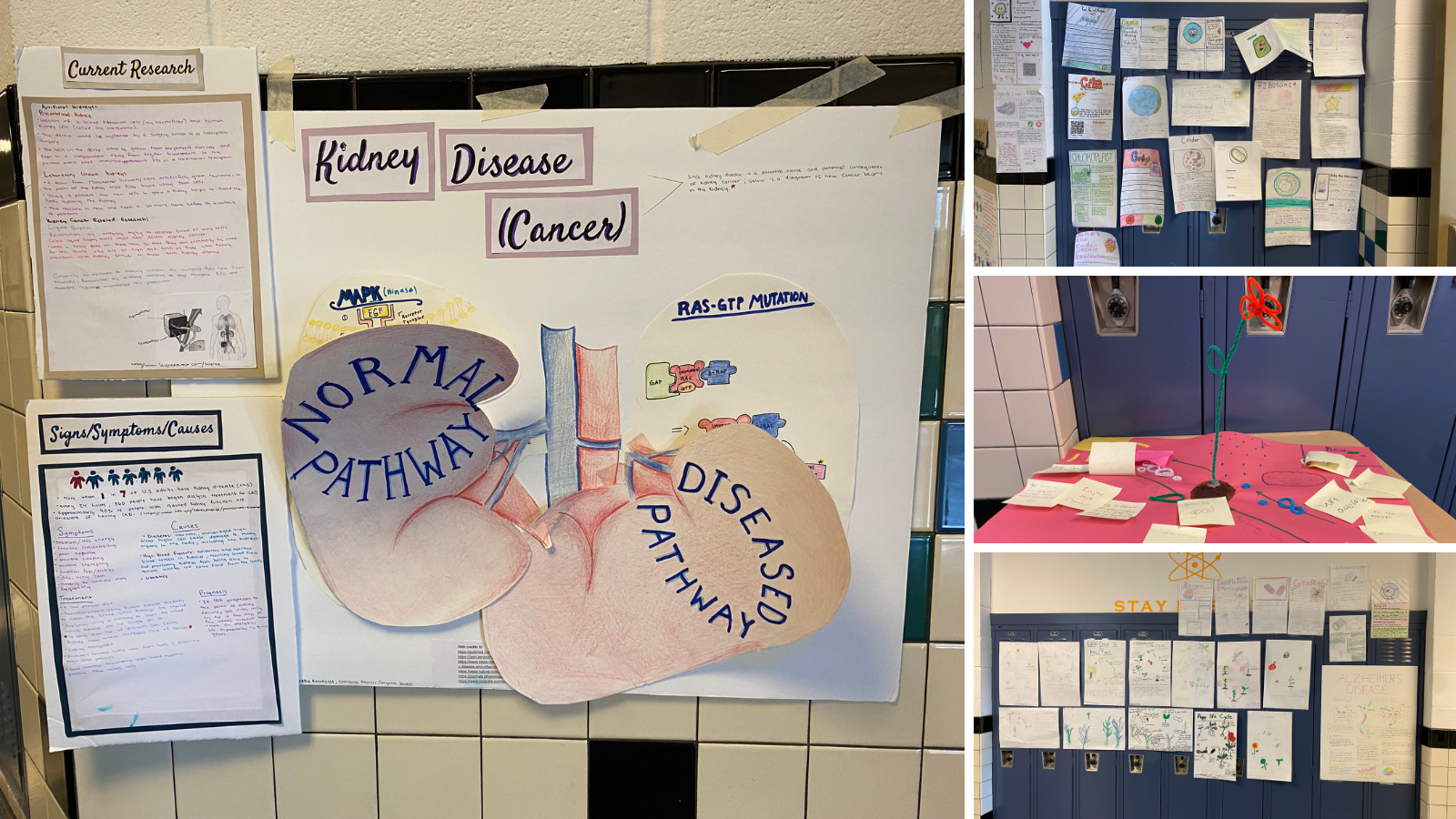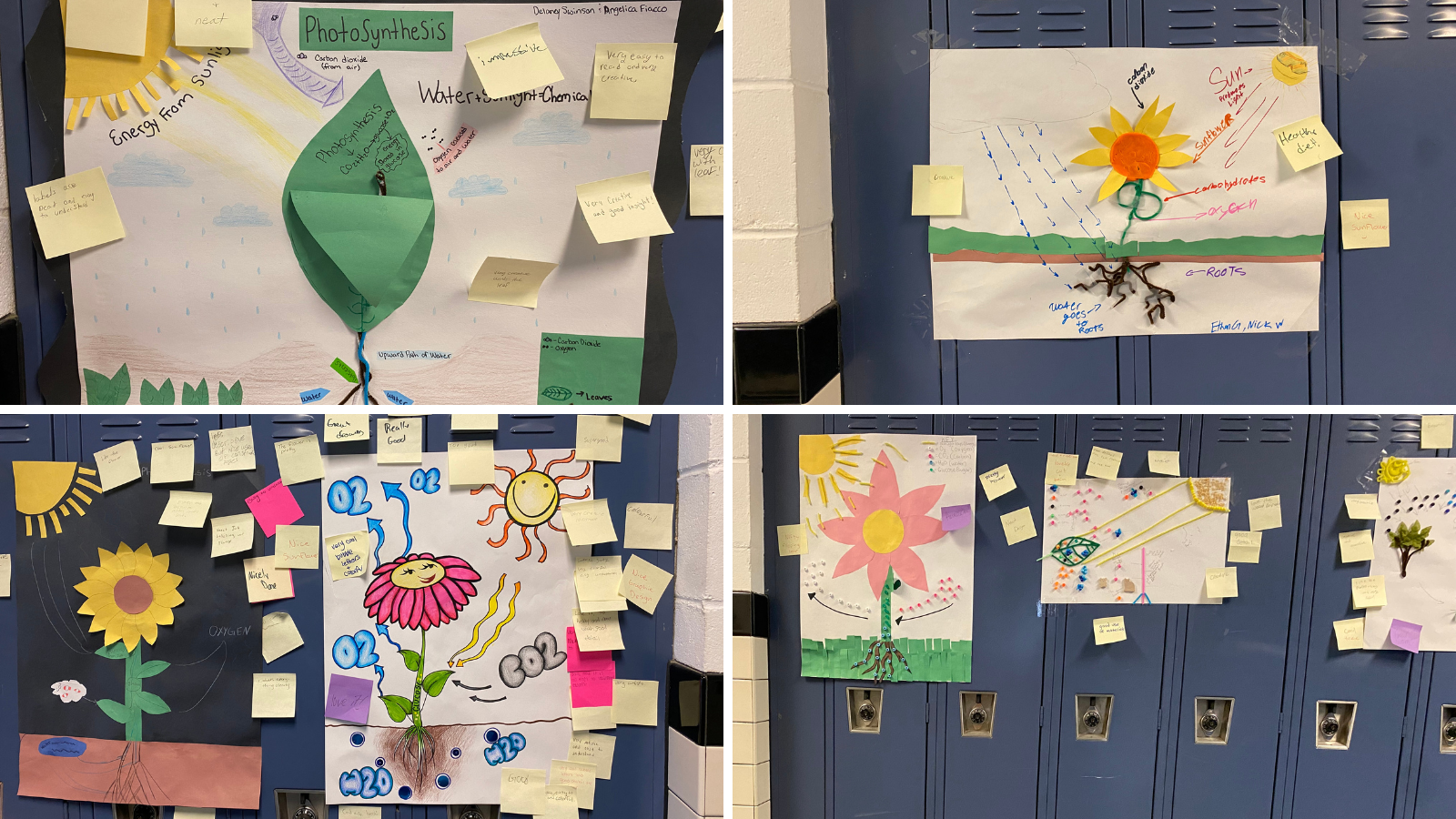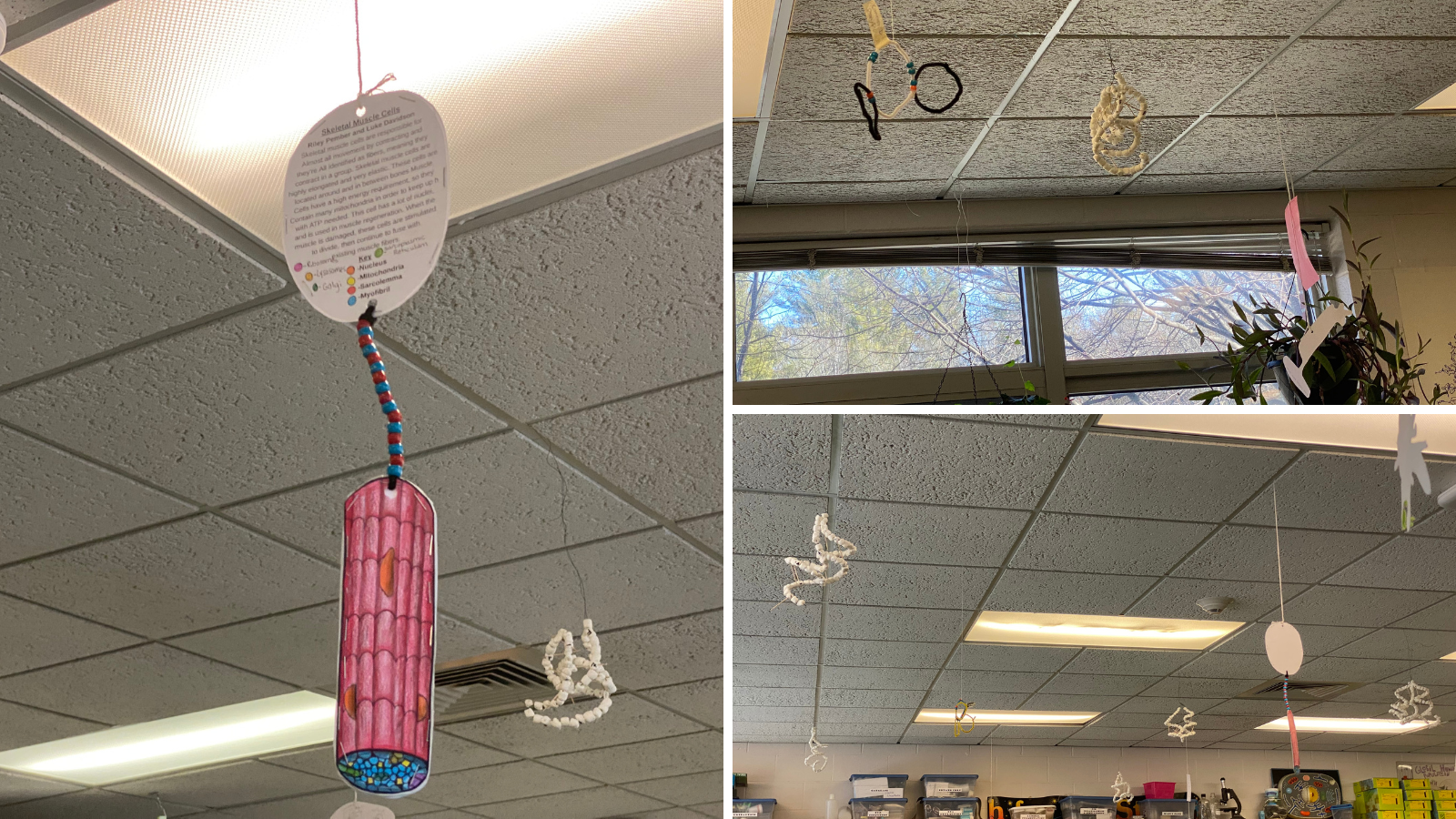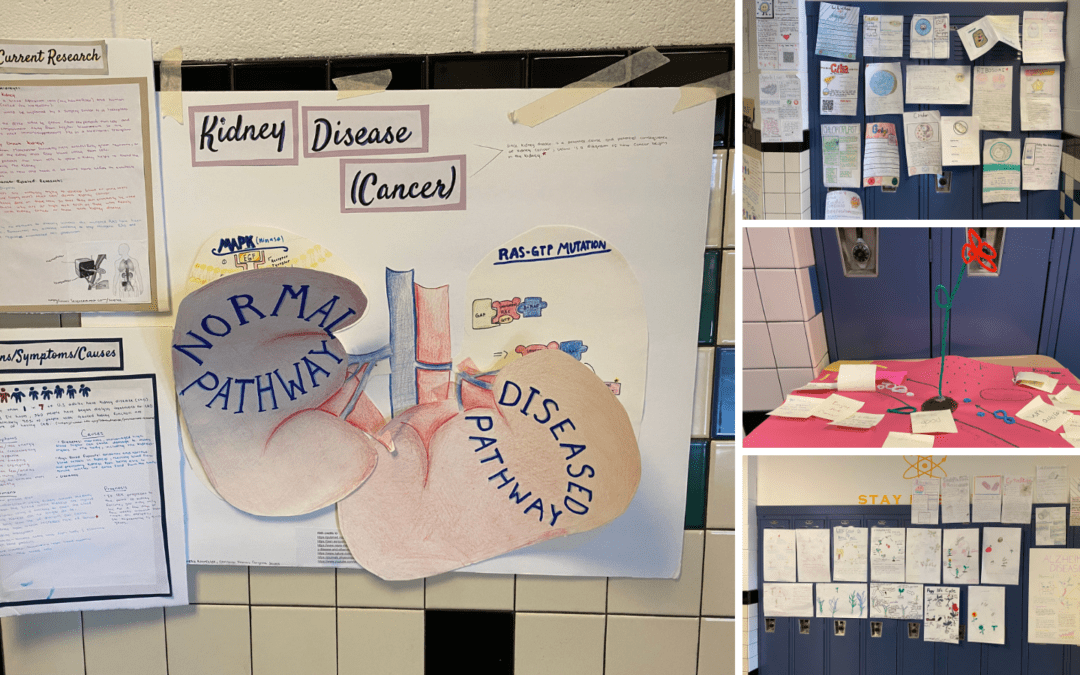A section of the second floor at Averill Park High School showcases the engaging, outside-the-box, collaborative lessons students are working on in Living Environment Sciences.
Students in Mrs. Oldendorf’s, Ms. Caboot’s and Mrs. Sorriento’s classes researched areas of interest, developed creative presentations, and shared them in a “speed dating” format with peers recently.
“The Cell Organelle Dating Profiles were used for an Organelle Speed Dating activity we did in my Honors Biology class on the day before holiday break,” Oldendorf said. “They had to assume the identity of an organelle and then they speed dated to learn about the functions and ‘bad habits’ of the organelles.”
Principal Quiles is thrilled to see the instructional team coming up with new ways to get students involved and excited about lesson plans.
“As we transition back to ‘normal’ after our experiences with COVID, there is no question that we need to look closely at making our instruction, how we teach and engage students, more interactive, project-based, collaborative, and hands-on,” he said. “The days of ‘stand and deliver’ instruction, and lecturing, at this point, should be far behind us. This amazing work by our Living Environment Science Team highlights where we need to be headed. Their practices engage students actively, and collaboratively, in the learning process in ways that keep them interested, growing, and invested in their own development.”
Ms. Caboot’s Living Environment students wrapped up the topics of photosynthesis and cellular respiration by creating Instagram bios for a plant of their choice.
“While doing this, students had to research their plants by focusing on how they go through both processes along with other basic plant facts,” she said. “Students got very creative and thought outside of the box to give these plants humanlike personalities.”
In Mrs. Sorriento’s class, students completed models of photosynthesis that illustrate reactants, products, and where photosynthesis occurred. Students evaluated each other and made modifications before displaying them.
Additionally, students in Mrs. Oldendorf’s AP Biology class worked on cell signaling projects, which hang from the ceiling of her classroom. Students chose a disease and researched the mechanisms in the cell that led to the disease state, as compared to the normal state. They were given a list of seven types of cells in the human body, in which there are more than 200.
“Students had to research that cell type and describe how its structure is directly related to its function,” Oldendorf said. “One of the big NGSS themes is structure and function, so this was an activity designed to highlight that specific crosscutting concept.”
While many aspects of science are hard to view with the naked eye, the Living Sciences instructional team has managed to bring them to life in a big way at APHS.





